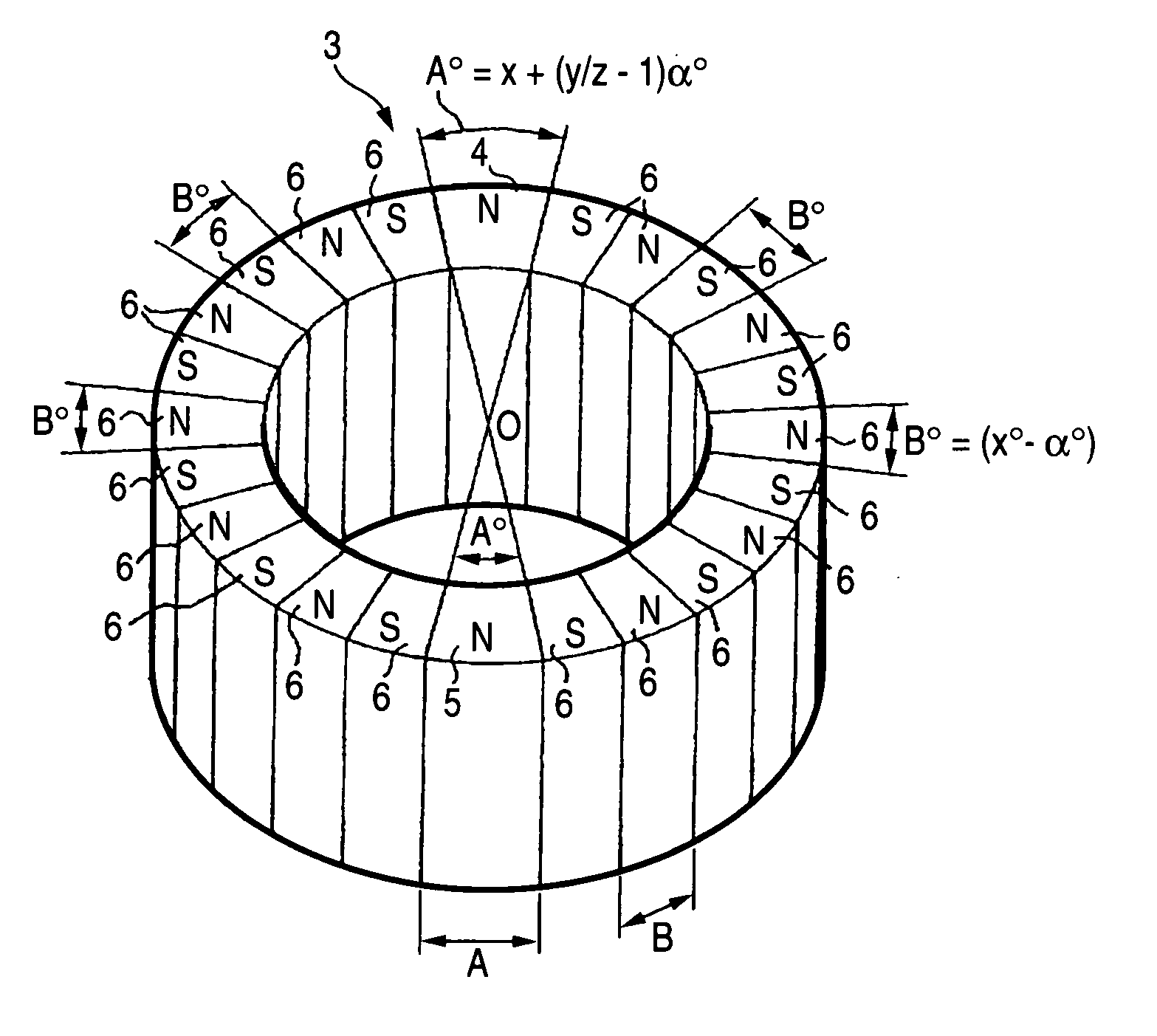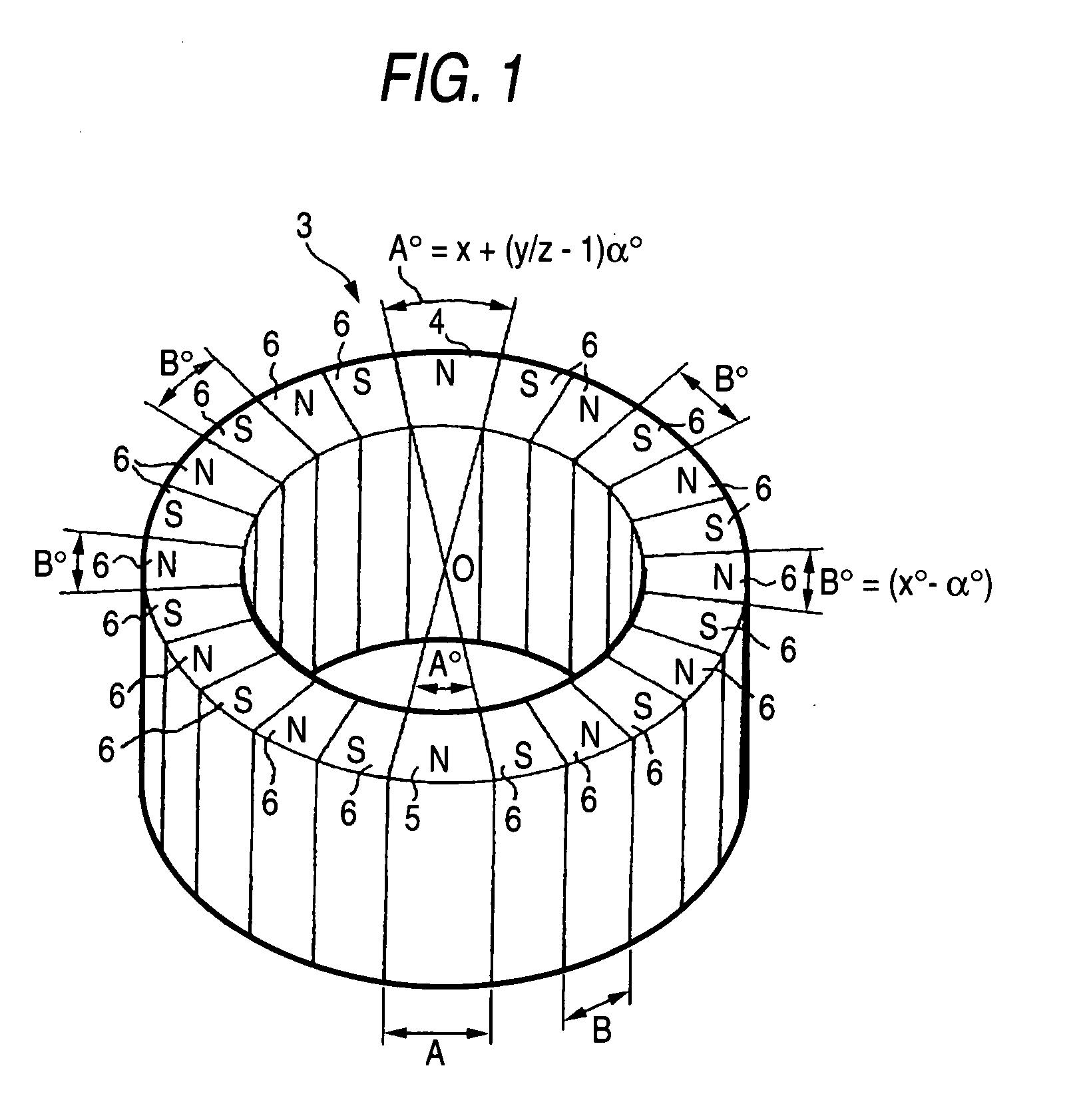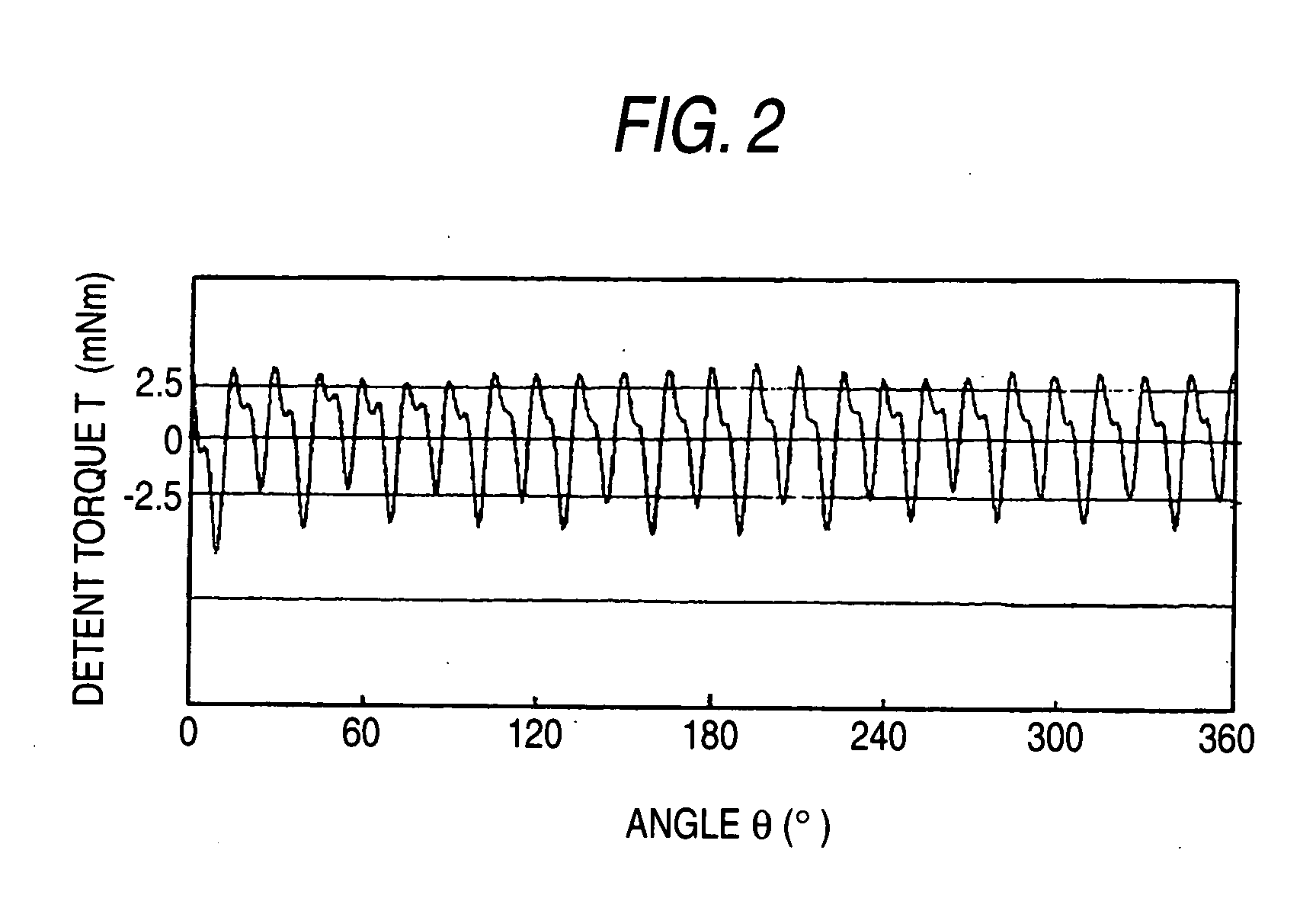Magnetization pattern of rotor magnet for stepping motor
a technology of stepping motor and magnetization pattern, which is applied in the direction of rotating magnets, synchronous machines with stationary armatures, electrical apparatus, etc., can solve the problems of increasing torque ripple and a rotating speed ripple of the motor, non-magnetization drastically lowering the driving torque during driving, and the stepping motor is not suitable for the practical application, etc., to reduce the detent torque, reduce vibration and noise, and small drop of the driving torqu
- Summary
- Abstract
- Description
- Claims
- Application Information
AI Technical Summary
Benefits of technology
Problems solved by technology
Method used
Image
Examples
Embodiment Construction
[0031] The invention accomplishes the objects of reducing the detent torque and suppressing the occurrence of vibration and noise by selecting the magnetization width A of the magnetization portions of the rotor magnet opposing each other with the rotary shaft of the rotor magnet as the center and the magnetization width B of the magnetization portions magnetized into the equal width at a plurality of other portions among the magnetization portions of the magnetic poles in the rotating direction of the rotor magnet so that they satisfy the relation A>B.
[0032] An embodiment of the invention will be hereinafter explained with reference to FIGS. 1 and 2. In the drawings, reference numeral 3 denotes a cylindrical rotor magnet. The rotor magnet 3 is arranged rotatably inside a stator unit (not shown in the drawings) having stator magnetic poles. A core part of the rotor magnet 3 is integrally fixed to a rotary shaft disposed at the center of rotation. The rotor unit described above seri...
PUM
 Login to View More
Login to View More Abstract
Description
Claims
Application Information
 Login to View More
Login to View More - R&D
- Intellectual Property
- Life Sciences
- Materials
- Tech Scout
- Unparalleled Data Quality
- Higher Quality Content
- 60% Fewer Hallucinations
Browse by: Latest US Patents, China's latest patents, Technical Efficacy Thesaurus, Application Domain, Technology Topic, Popular Technical Reports.
© 2025 PatSnap. All rights reserved.Legal|Privacy policy|Modern Slavery Act Transparency Statement|Sitemap|About US| Contact US: help@patsnap.com



